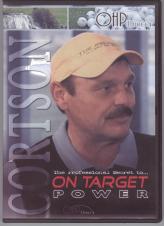A lot has been written about the importance of visualization, however, little has been said about just how to do it. I have the good fortune to have been a good friend and adviser to Australian Hall Of Fame golfer Bruce Crampton for many years. In our discussions over the years visualization has always been a favorite topic. As many of you know, I host a weekly public radio program on positive thinking and I have authored the book "Winning Thinking, how to be happy almost all of the time". So what is visualization and how can you direct your thinking on command?
Bruce won 14 times on the PGA Tour and 20 times on the Champions Tour. He has also won many events worldwide including the Australian Open when he was only 19 against Peter Thomson, who was in his prime. In Bruce's rookie season on the Champions Tour he won and amazing 7 times! He had been out of competitive golf for 6 years prior to that working in the oil business in Dallas. His only playing for fun with Ben Hogan twice weekly. So what was he doing that rookie season that led to all of those wins? A few months before he started the Champions Tour he began listening to positive thinking tapes. He worked daily on "seeing" his shots and letting his subconscious mind take over the details. If you pick up a glass of water and drink it you don't think about what muscle groups you are using etc... You give yourself the thought or command to take a drink and your subconscious goes to work telling the body what to do. It is the feedback that allowed you to master the skill. Like a baby trying to feed himself, it is the feedback that trains him to get better and refine his skills.
We all think in pictures or movies. If I ask you what color your first bike was you will no doubt know the answer in a few seconds even though it has been years or even decades since you last saw it. How did you remember that? How were you able to find it in your mind? Our brain is like a computer. It stores everything we have taken in both consciously and unconsciously. Just as we use a mouse or pad to access information on our computers we also have one that we use for our brains. Our mouse is our eyes. How we move our eyes triggers the search function. When I learned this decades ago it made everything far easier including passing the California Bar. We use this "mouse" all the time. Once you know where to "look" you will be able to have clear recall.
The sensations you have felt hitting the shot you need to hit at a given time can be recalled and duplicated. This is why it is so important to practice odd lies, stances, drastic curves left or right, high or low etc... Bruce is a master of this. Call it getting into the zone. You can teach yourself to do this at will. I used these same techniques to get out of an end of life hospice situation in 2003/04 dying from cancer and a massive stroke. This is powerful stuff indeed.
Tuesday, December 3, 2013
Thursday, November 7, 2013
Conservation of angular momentum
Byron Nelson always said "You can't stand too close to the
ball." There is a physics explanation for why that works. To
put it simply, there are 2 circles in a golf swing. The first
is the arm swing and the second circle is the body turn. The
body turn is where the zip comes from. It is called
conservation of angular momentum. Ice skaters use it to spin
fast. By pulling their arms in close they allow the center to
spin faster just like a shorter pendulum will go faster than a
long one. By keeping your hands close to your body you can turn
your body faster.
I know a lot of people make a big fuss over "width" in a swing. Width is a constant. It runs from your lead shoulder down to the club head. It ain't getting any longer than it already is, period. Any attempt to "reach" to create width is just plan silly and leads to changing the path. You arm isn't getting any longer nor is the club shaft. So it is a stupid idea to think you can make it longer. Most "experts" just aren't. They repeat "the world is flat" and figure that will suffice.
Stand close as is comfortable. On the back swing turn you butt to the target. Keep your body soft with no tension. Humans aren't rubber bands and never will be. So turn you butt to the target then turn your belly button to it. It should feel soft and smooth like a dance move.
I know a lot of people make a big fuss over "width" in a swing. Width is a constant. It runs from your lead shoulder down to the club head. It ain't getting any longer than it already is, period. Any attempt to "reach" to create width is just plan silly and leads to changing the path. You arm isn't getting any longer nor is the club shaft. So it is a stupid idea to think you can make it longer. Most "experts" just aren't. They repeat "the world is flat" and figure that will suffice.
Stand close as is comfortable. On the back swing turn you butt to the target. Keep your body soft with no tension. Humans aren't rubber bands and never will be. So turn you butt to the target then turn your belly button to it. It should feel soft and smooth like a dance move.
Subscribe to:
Posts (Atom)


